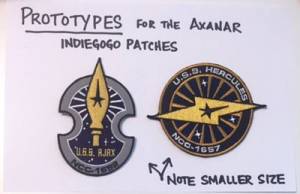prevent its disclosure to any person not authorized to create the subscriber's digital signature
So the signature can be used by another entity to create the digital signature if authorized beforehand.
So if there is a statement that "I authorize [organization] to create a cryptographic key-pair on my behalf, and create the digital signature."
 Patches The languishing Kickstarter backers’ patches are the first four pictured above. The fifth is from the Axanar Indiegogo and the Starfleet Disaster Response was available for Axanar’s “special events.”
Patches The languishing Kickstarter backers’ patches are the first four pictured above. The fifth is from the Axanar Indiegogo and the Starfleet Disaster Response was available for Axanar’s “special events.”